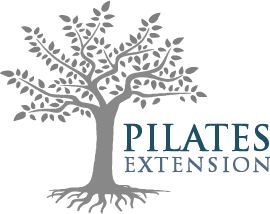-
Can anyone do Pilates?
Pilates is a form of exercise that is meant to be accessible to everyone whether you are male or female, fit or unfit, active or inactive or flexible or not. It is a low-impact form of exercise that is safe for almost anyone of any ability to try. Instructors are trained to assess each person individually based on their history as well as through movement and postural analysis to ensure that programmes are specifically suited to the different needs of each body.
-
I have injuries, can I still do Pilates?
If you have any concerns about whether or not you can participate in a Pilates programme, it is essential to check with your doctor first. If you have medical clearance to proceed, the next step is to consult with the instructor about the exact condition and see whether it is within their scope of practice or experience to assist with your rehabilitation. In saying this, Pilates can play an essential role in the rehabilitation of injuries and is designed to be complementary to other methods of rehabilitation examples of which include practices such as physiotherapy, chiropractic work, acupuncture, massage and podiatry. Pilates is an adaptable form of exercise, meaning that movements can be modified to assist or challenge clients either as they are or with the use of props and accessories, so a number of limitations can be overcome.
-
Is it safe to do Pilates if I am pregnant?
Yes. Pilates is an extremely safe form of exercise to participate in whilst pregnant. It is ideal to be participating in a Pilates programme prior to becoming pregnant so that your body is conditioned and used to the form of exercise, however, it is also possible to start Pilates once you are pregnant. All programmes and positions are modified to ensure the safety of both mum and baby throughout the pregnancy. When you are pregnant it is recommended that you do individual or semi-private classes because of the modifications necessary.
-
How do I get started?
Contact the studio via phone, email or through the website in order to book your initial consultation. Your initial session will be either an individual class or if you are coming with a friend or family member a semi-private class where you will be assessed and a programme can be devised for you based on your assessment and goals.
-
What should I wear?
Comfortable clothes that you can move in easily and a pair of socks.
-
What should I bring?
Everything is provided by the studio but you may like to bring any referral letters or medical records that you think are relevant.
-
How often should I do Pilates?
This is really dependent on your goals and your schedule. It is ideal to do it twice to three times a week, particularly if you want to see the results quickly; however many clients do other forms of exercise as well and life is always so busy that not everyone can make it to class twice a week, in which case, if once a week is do-able for you, then that is how often you should do it. Once you have started, it is easier to decide on how many times a week you want to come to class and what combinations of classes you want to do when you realise the benefits Pilates is giving you.
-
How is Pilates different to other forms of exercise and can’t I just go to gym?
Pilates is what is described as an “efficient” type of exercise, meaning the effort made with each movement is precise and detailed so that it provides a result for the body, it is quality of movement over number of repetitions and weight. Pilates is a low-impact form of exercise that works your deeper intrinsic muscles as well as your global muscle groups and it strives to create a balance of function between these different muscle groups for correct body alignment, posture, strength development, flexibility and joint mobility. Its emphasis is to create better movement patterns and function throughout the body that are not always the focus of other forms of exercise and thereby enhances the practice of other forms of exercise.
-
What is the difference between Pilates and Yoga?
There is always a lot of confusion about what the differences are between Pilates and Yoga. They are both mind-body forms of exercise and some aspects and principles overlap, however, their focuses are quite different. In very basic terms, Yoga is a more spiritual and meditative form of exercise with specific stationary postures that flow into one another whereas Pilates is based on dynamic movement and a set number of repetitions of these movements to improve strength, balance, mobility, flexibility and core control. They are very complementary and a lot of clients actually practice both Yoga and Pilates because of the different qualities each exercise offers.

